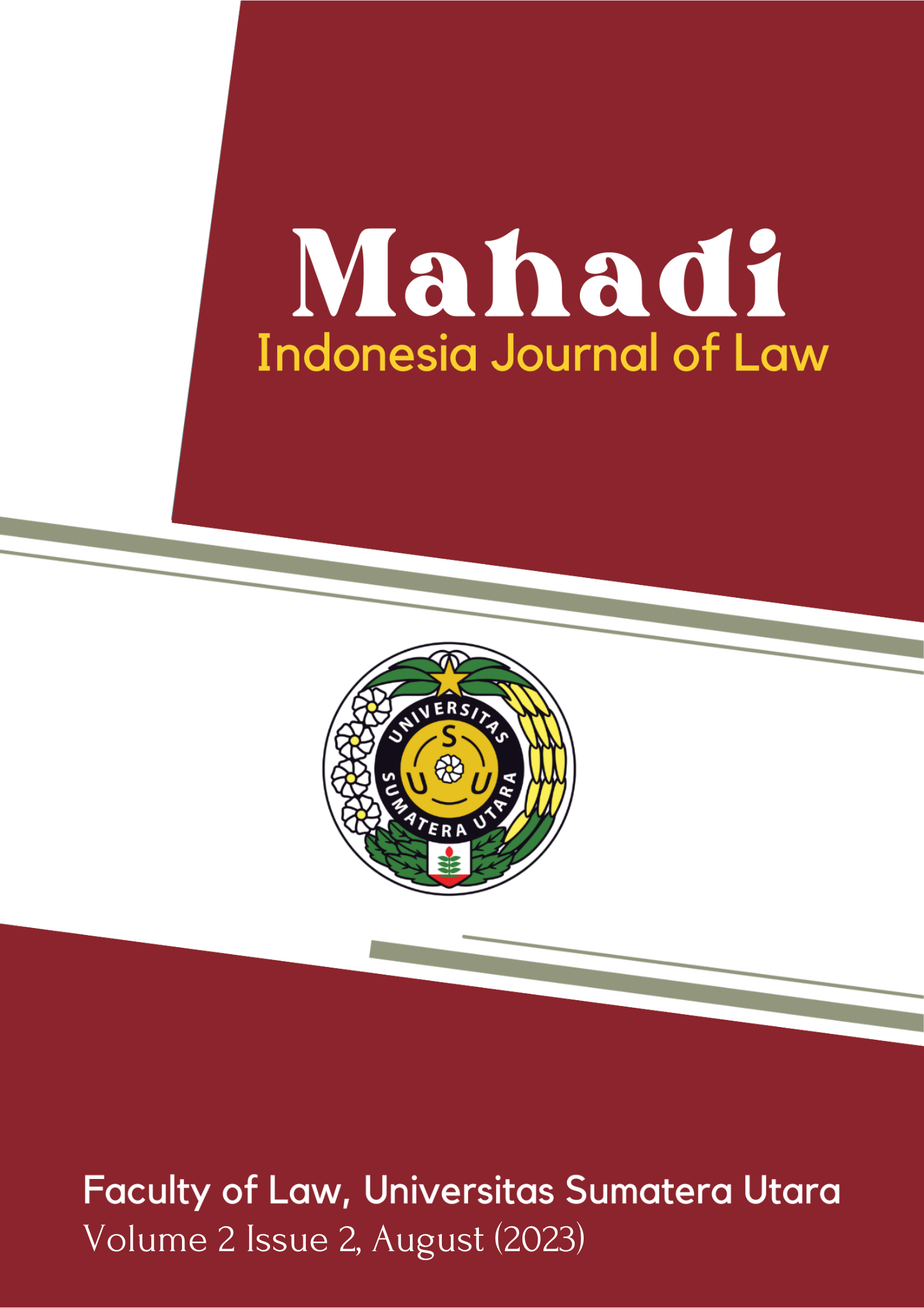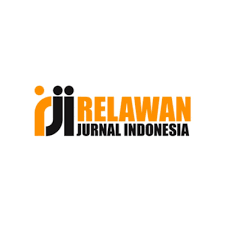Analysis of The Factors That Contribute To The High Rate of Private Vehicle Ownership In DKI Jakarta
DOI:
https://doi.org/10.32734/mah.v2i2.12348Keywords:
Private Vehicles, Policy, Public TransportationAbstract
One of the primary causes of traffic jams in Daerah Khusus Ibu kota (DKI) Jakarta is the high number of private vehicle ownership. The DKI Jakarta government has implemented a number of measures to reduce motorized vehicles, such as the "ganjil-genap" policy, progressive tariffs, and the provision of various forms of public transit as an alternative, to alleviate congestion. However, these efforts have not been able to reduce the number of private vehicle ownership in DKI JakartaThis study adopted qualitative research approach by utilizing the literature study methodology. The results shows that the high rate of private vehicle ownership in DKI Jakarta is caused by several factors: first, there are still loopholes for committing violations in every policy implemented by the DKI Jakarta government. Second, that private vehicle ownership is not just a means of transportation, but also a way of showing social class in people's lives. Third, the DKI Jakarta administration has not been able to offer public transportation that satisfies people's needs: safe, able to integrate all modes of transportation, as well as simple accessibility and the capacity to send passengers to their final destination.
Downloads
References
Adinegoro, K. R. R. (2022). Implementation of Collaborative and Multicultural Attitudes in Leadership in Integration and Arrangement of Public Transportation. Public Spirit: Journal of Public Administration, 17(1), 1–11.
Adriana, M.C., Situmorang, R. and Aji, B.J., 2023. Exploring the transport mode choice of University students in Jakarta: A case study of Universitas Trisakti. Spatium.
Antara News. (2021, July 28). The majority of trips take Jakarta public transportation from Buffer. Antara News. https://www.antaranews.com/berita/2294518/maoritas-perjalanan-dengan-transportasi-umum-jakarta-dari-penangga
Bapenda Jakarta. (2017, May 26). Imposition of Motorized Vehicle Tax Is Determined Progressively. Bapenda Jakarta.
Bestari, N. P. (2023, February 4). Odd-Even Valid at 25 Jakarta Street Points, Check the Schedule. CNBC Indonesia. https://www.cnbcindonesia.com/news/20230204010948-4-410932/ganjil-genap-berlaku-di-25-dot-jalan-jakarta-check-schedule
Carmanto, O. (2019). Impact Analysis of the Implementation of DKI Jakarta Regional Regulations concerning Progressive Taxes on Sales Figures at PT Asia Berjaya Mobilindo (Mazda Jakarta Timur). Repository.Bsi.Ac.Id.
Ermawati, E., & Widiastuti, N. P. E. (2014). The Impact of Imposing Progressive Tax Rates on Motor Vehicles in DKI Jakarta Province. Journal of Infestation, 10(2), 103–114.
Fadhli, M. E., & Widodo, H. (2020). Congestion Reduction Analysis Based on Odd-Even System. Planners Insight: Urban And Regional Planning Journal, 2(2), 036–041. https://doi.org/10.36870/insight.v2i2.136
Fathurrizqi, M., & Alvinsyah. (2021). Analysis of Motorcycle User Preferences for the Implementation of Electronic Road Pricing (ERP) in DKI Jakarta Traffic Restriction Areas. Proceedings of the 24th Inter-Higher Education Study Forum Symposium on the University of Indonesia – Pembangunan Jaya University,.
Gunawan, H. (2019). The Influence of Cultural, Social, Personal and Psychological Factors on Purchase Decisions for Toyota Avanza Car Products in Surabaya. Agora, 7(2).
Hasiholan, A. A. (2022). Implementation of Traffic Restriction Policy with Odd-Even System in DKI Jakarta Province. Diss. Institute of Home Administration.
Hilmy Abiyyu, M. A., Estiyono, A., & Kurniawan, A. (2020). Design Requirements & Objectives on Urban Electric Scooters as Supporting Urban Mobility Lifestyles Through Identifying Persona Needs. ITS Journal of Science and Art, 8(2). https://doi.org/10.12962/j23373520.v8i2.49720
Indonesian CNN. (2021, March 10). Restrictions on 10-year-old cars in DKI are hampered by central regulations. Indonesian CNN.
Indonesian CNN. (2023, January 11). Why is ERP Paid Road in Jakarta Not Implemented Yet? Indonesian CNN. https://www.cnnindonesia.com/otomotif/20230110181405-579-898615/mengapa-jalan-berbay-erp-di-jakarta-belum-diterapan
Indonesian media. (2022, July 13). Cases of Harassment on Public Transportation Increase, Deputy Governor of DKI: Don't be Afraid to Report . Indonesian Media. https://mediaindonesia.com/megapolitan/506512/case-pelecehan-di-transportasi-umum-meningkat-wagub-dki-jangan-takut-report
Jumardi, Ruli, Abdulhadi, Atika Siska, Viki, & AZ Zaki. (2020). Development of Rail Transportation in Jakarta. Pattingalloang: Journal of Educational Thought and Historical Research, 7(1), 40–48.
Kaelan, S., Bintoro, B.P.K. and Nugroho, R.E., Analysis of the Factors Causing Delay in Completion of Light Rail Transit (LRT) Project on Cawang-East Bekasi.
Kompas.com. (2022). Jakarta Congestion Index Drops, Observer: That's because of the Pandemic, Not DKI Provincial Government Policy. https://megapolitan.kompas.com/read/2022/02/14/12563761/indeks-kemacetan-jakarta-turun-pengamat-itu-because-pandemi-bukan?page=all.
Kompas.id. (2023, April 13). Screams in the Jabodetabek KRL Women's Carriage. Kompas.Id. https://www.kompas.id/baca/metro/2023/04/12/teriakan-teriakan-kaum-hawa-di-gerbong-perempuan-krl
Marsinga, R. L. (2018). Effectiveness of Article 7 Paragraph (1) Letter A Regional Regulation of the Province of the Special Capital Region of Jakarta Number 2 of 2015 concerning Motorized Vehicle Tax Regarding Taxpayer Compliance with Progressive Taxes. Doctoral Dissertation, Brawijaya University.
Parmono, V. R. (2019). The Social Dilemma of Jakarta Transportation Users: Assessment Survey and Intentions to Use Public Transportation in Jakarta. Urban Journal, 10(1), 1–21. https://doi.org/10.25170/perkotaan.v10i1.312
Police Traffic Corps. (2023, January 25). Jakarta Congestion Index Increases 50 Percent. Police Traffic Corps. https://korlantas.polri.go.id/news/dirlantas-metro-indeks-kemacetan-jakarta-meningkat-50-persen/
Ramdhani, J. (2023). The ERP Trial in DKI is Called to have Started on January 25, this is the Fact. Detik news. https://news.detik.com/berita/d-6548203/uji-coba-erp-di-dki-disebut- already-mulai-25-januari-ini-facts
Ratnaningtyas, H., Nurbaeti, N., Asmaniati, F., & Bilqis, L. D. R. (2022). Travel to Jakarta with its Congestion. Journal of Hospitality and Tourism Management, 4(2), 58–66. https://doi.org/10.23887/jmpp.v4i2.43701
Razak, M. R. R., & Ahmad, J. (2020). Tracing and Comparing Rail-Based Public Transportation between Kuala Lumpur and Jakarta. MALLOMO: Journal of Community Service, 1(1), 1–14. https://doi.org/10.55678/mallomo.v1i1.191
Reynaldy, R., Kasikoen, K.M., Cahya, D.L. and Putri, M.N., 2022. The Relationship Between The Characteristics Of The Choice Of Transportation Modes In The City Of West Jakarta During The Covid-19 Pandemic. Jurnal Pensil: Pendidikan Teknik Sipil, 11(2), pp.186-206.
Satrio, R.B., Hidayat, A.K. and Hayati, A., 2023. The Impact of Transjakarta Bus Rapid Transit (BRT) Operationalization on Economic Growth and Unemployment Rate in DKI Jakarta Province. Quantitative Economics and Management Studies, 4(2), pp.261-277.
Sindonews.com. (2022, October 22). Get to know the 5 differences between the MRT, LRT and KRL Commuter Line. Sindonews. Com. https://metro.sindonews.com/read/919871/171/mengenal-5-perbedaan-mrt-lrt-dan-krl-commuter-line-1666433441
Sitanggang, R., Saribanon, E., & Trisakti, I. (2018). Factors Causing Congestion in DKI Jakarta.
Sodri, A. and Garniwa, I., 2016. The effect of urbanization on road energy consumption and CO2 emissions in emerging megacity of Jakarta, Indonesia. Procedia-Social and Behavioral Sciences, 227, pp.728-737.
Sumasto, F., Imansuri, F., Agus, M. and Wirandi, M., 2020, July. Sustainable development impact of implementing electric taxis in Jakarta: A cost-benefit analysis. In IOP Conference Series: Materials Science and Engineering (Vol. 885, No. 1, p. 012027). IOP Publishing.
Syahbandi, M. (2020). Trends in the Selection of Private Vehicle Modes and Public Transportation for the City of South Tangerang. Sumatra Institute of Technology.
tempo.co. (2022, October 20). Number of Transjakarta Users Reach 800 Thousand Passengers per Day. https://metro.tempo.co/read/1647425/nomor-pengguna-transjakarta-tembus-800-ribu-penumpang-per-hari#:~:text=Kamis%2C%2020%20Oktober%202022%2013%3A02 %20WIB&text=TEMPO.CO%2C%20Jakarta%20%2D%20BUMD, passengers%20daily%20%20month%20September.
Tomtom Traffic Index. (2022). TOMTOM TRAFFIC INDEX: Rankings 2022.
Transjakarta. (2023). Transjakarta. https://transjakarta.co.id/product-dan-layanan/layanan-bus/transjakarta/#:~:text=Transjakarta%20 is%20a%20system%20transportation,activity%20capital%20yang%20very%20dense
Wismadi, A., Soemardjito, J. and Sutomo, H., 2013. Transport situation in Jakarta. Study on Energy Efficiency Improvement in the Transport Sector through Transport Improvement and Smart Community Development in the Urban Area, pp.29-58.
Downloads
Published
How to Cite
Issue
Section
License
Copyright (c) 2023 Lode Wijk Pandapotan Girsang

This work is licensed under a Creative Commons Attribution-ShareAlike 4.0 International License.











